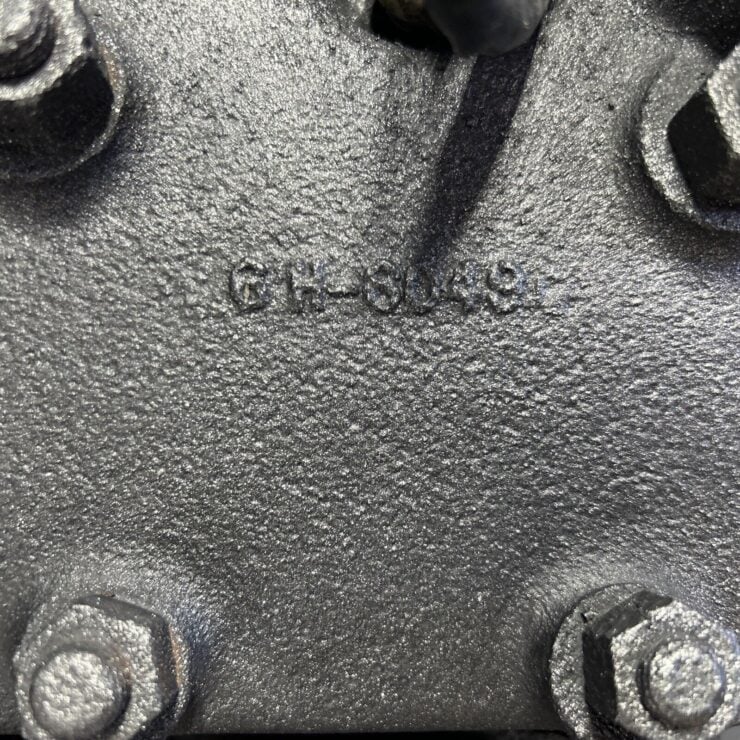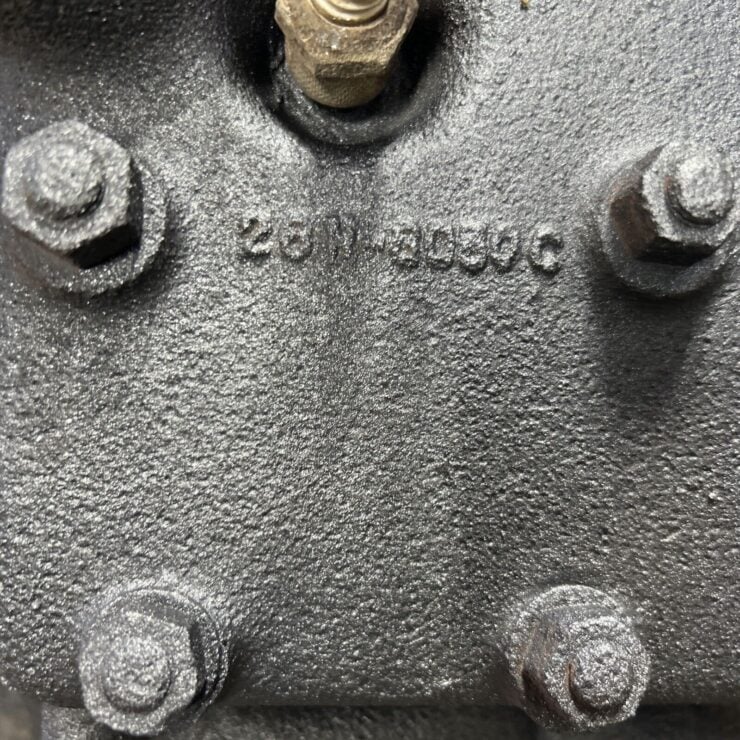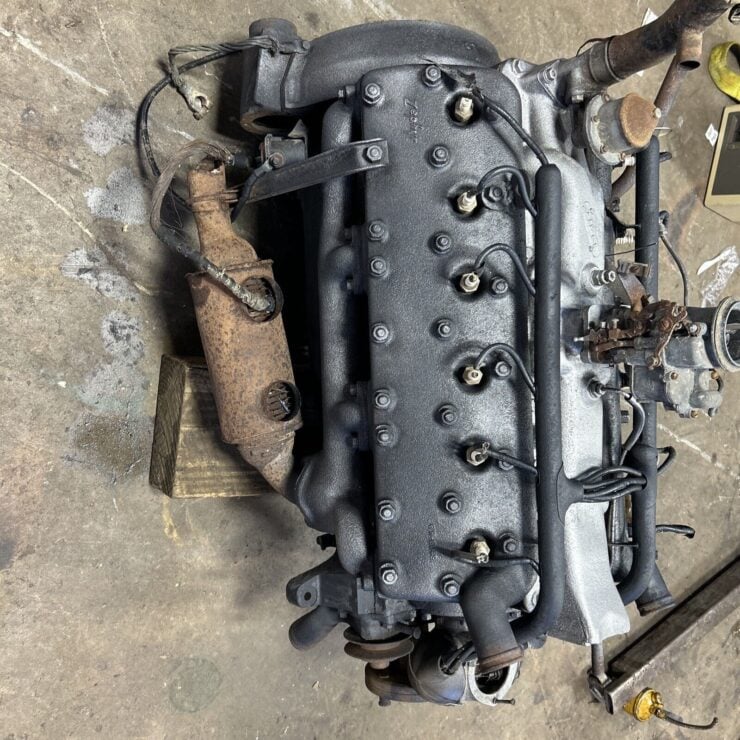This is a Lincoln-Zephyr V12 H-series engine that would have been built between 1936 and 1948 as the powerplant for the Lincoln-Zephyr line of midsized luxury cars.
The H-series V12 owes much of its design to the earlier Ford Flathead V8 engine that debuted four years earlier in 1932. While the two engines share no parts in common the 75° V12 is a direct descendant of the 90° Flathead V8, and after some early teething troubles, both engines would establish a reputation for reliability.


The Lincoln-Zephyr H-series V12 was developed specifically to power the new Lincoln-Zephyr line of more affordable luxury cars, a model line that would sit below the high-end Lincoln Model K, and above the Ford V8 DeLuxe.
The first version of the H-series V12 had a displacement of 267 cubic inches (4.38 liters) and used aluminum heads, dual coolant pumps, dual coils (one for each bank), and cast-steel pistons.
The engine was capable of 110 bhp at 3,900 rpm, a relatively high engine speed for the time, particularly in a flathead. Torque topped out over 190 lb ft, and a minimum of 180 lb ft was available from 400 rpm all the way up to 3,500 rpm – a remarkably flat torque curve.
Early versions of the engine did suffer some issues that led to a reputation for unreliability. Sludge buildup caused by poor crankcase ventilation and low-rpm running could lead to overheating.
Most vehicle owners at the time weren’t used to accessing power at higher rpms, and so many kept the revs low and suffered the consequences. Other issues were caused by coolant passages that were too narrow, which would also lead to overheating, resulting in bore warpage and ring wear.
Ford/Lincoln engineers rapidly addressed these issues, switching to hydraulic valve lifters and adopting a series of modifications to keep the engines running cooler and avoid overheating.
The engine was enlarged to 292 cubic inches (4.79 liters) for 1940. Due to the United States joining WWII in 1941 the engine would leave production while the factory shifted over to helping with the war effort. It would resume production in the same specification in 1946, after the war had ended and civilian production was ramping up once again.
There was one other version of the engine made, though in far lower numbers, it had a displacement of 306 cubic inches (5.0 liters) and it was made for a single month in 1942, and it was resurrected after the war for a short time before production switched over to the earlier 292 cubic inch version.
Although the Lincoln-Zephyr H-series V12 is far rarer than the Ford Flathead V8, it has become a feature, albeit an uncommon one, in the custom car scene. There are specialists who can rebuild them to reliably produce 250+ bhp, like H&H Flatheads in La Crescenta, California.


The H-series V12 you see pictured in this article is currently being offered for sale on eBay out of Madison, Florida with a Buy It Now price of $4,500 USD. The seller explains that belonged to his uncle, who used to run it for him from time to time, and he says it probably needs new spark plugs and leads.
Looking over the images it’s probably safe to assume that the engine needs a rebuild before being used in a car. If you’d like to read more about it or register to bid you can visit the listing here.







Images courtesy of Elli Co.








